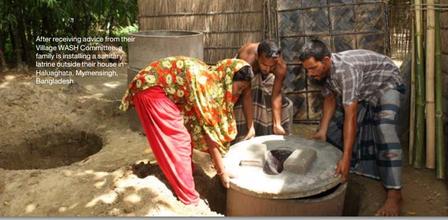Published on: 25/06/2013
 I
IInnovative impact assessment tools have been introduced. The WASH Programme started the second pilot run of a Qualitative Information System (QIS) in 72 sub-districts of Bangladesh. In December 2012, it tested the usability of Sensemaker, another tool to record and evaluate qualitative achievements.
Other highlights that get a mention are action research on sanitation technologies for areas with a high-water table, sanitation supply-chains and low-cost water treatment technologies; and a programme that explores the use and effectiveness of faecal waste as organic fertiliser.
Besides these highlights, the section on the BRAC WASH Programme presents a short case study on how arsenic and salinity problems were dealt with in the Aruakandi union of Mollarhat in Bagerhat district. The section concludes with a visualisation of the programme's sanitation, hygiene education and safe water coverage.